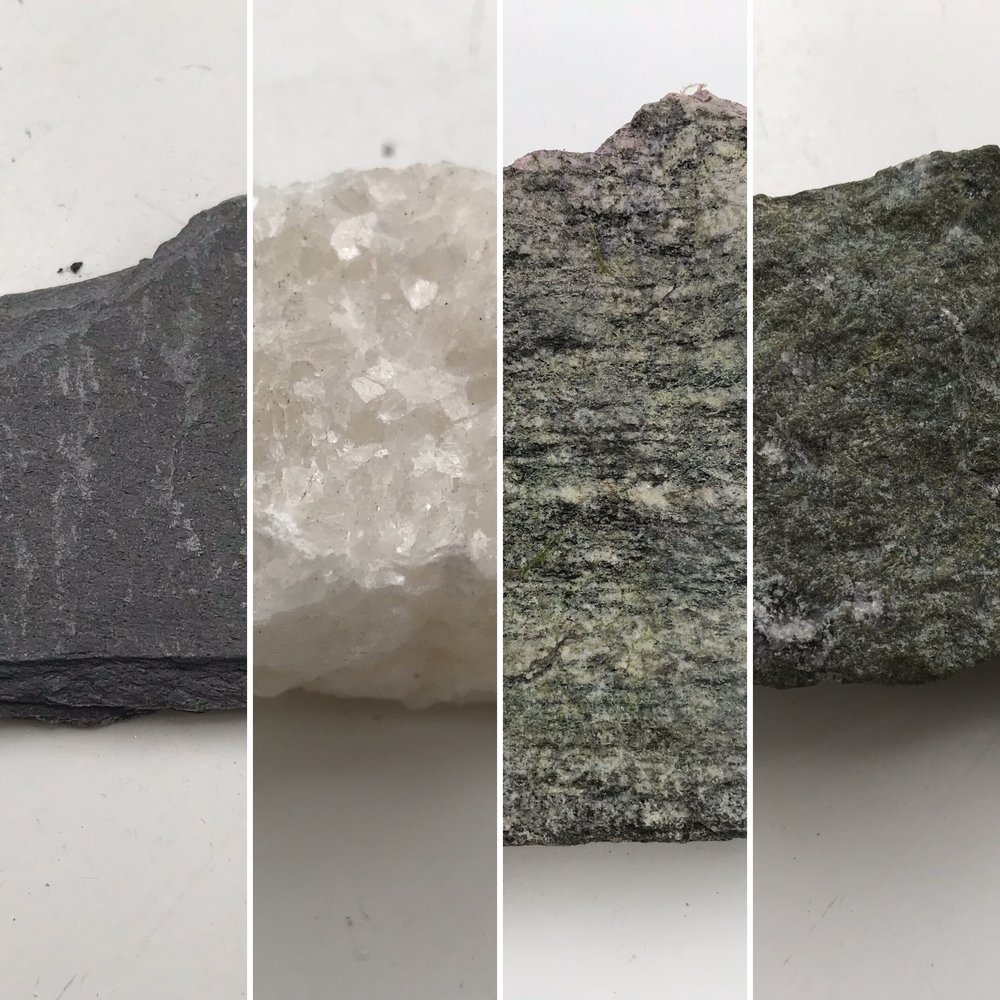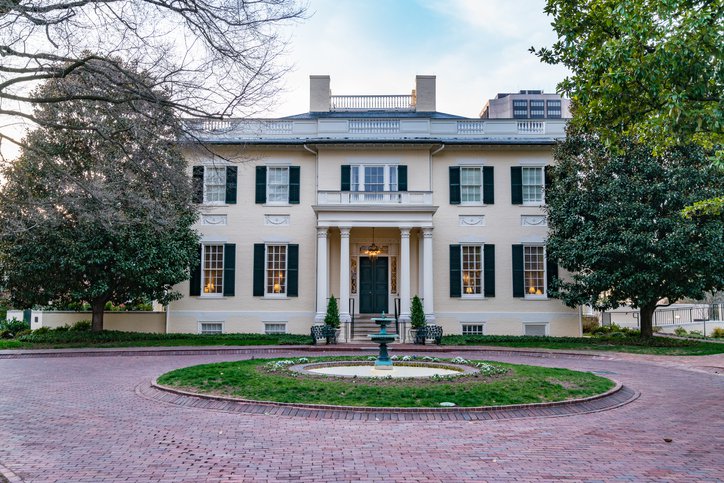Quarantine Quarrying: Metamorphic Rocks
Hello. David Olli, live science catalyst, reporting for another quarantine quarrying series installment. Thanks for coming back to learn more about rocks and minerals, and starting your own collection with common rocks and minerals found in Virginia.
If you’ve been following along, you know we’ve broken this post up into a few parts. Here we’re going to cover metamorphic rocks. In other posts, we’ve explored sedimentary rocks and igneous rocks, and soon we’ll post about minerals.
Metamorphic rocks form when igneous, sedimentary, and/or existing metamorphic rocks are subjected to extreme heat and pressure over millions of years and literally transform into a new rock.

Here's a common metamorphic rock you can find in various colors: marble. Marble is metamorphosed limestone. A lot of statues are made of marble but so are ornate building features such as columns, steps, floors and perhaps a countertop in your home.
Another common metamorphic rock is slate. Fairly consistent in its dark grey color (although it can also be reddish brown or a shade of green), slate is metamorphosed shale, a sedimentary rock made primarily of mud. Sometimes it can be hard to tell shale and slate apart, but shale can be more obviously layered and break off into flat pieces. A rock or mineral that tends to break along straight planes is said to have strong cleavage. Slate is all around us. Virginia features many historic houses with slate roofs (Virginia’s Executive Mansion remains roofed with slate), big pieces of slate are often used for path stones and some pool tables have slate under the felt.

Credit: Getty Images
Gneiss is a common metamorphic rock identified by its distinctive, alternatively banded or striped appearance. Sometimes the bands are deformed into wavy layers, indicating the immense stress and strain applied to these rocks deep within the Earth.
If you read my other rock blogs, you know I love to hike, especially in the mountains. As you approach the top of Afton Mountain from Richmond along I-64, you'll drive through a big outcrop of rock metamorphosed from basalt called greenstone. When you reach the top, drive a short distance down the Blue Ridge Parkway to hike up the jutting rocks of greenstone at Humpback Rocks. Drive north along Skyline Drive to access another popular hiking destination, White Oak Canyon, where several beautiful falls cascade over greenstone rocks and boulders. These metamorphic rocks started as basalts that flowed over what would become Virginia nearly 550 million years ago.
Now that we’ve explored Virginia metamorphic rocks, you can spend a few days trying to find some near you. Maybe you can even take a safe, socially distant drive to Virginia’s Executive Mansion to see the slate roof or to Virginia’s beautiful mountains to hunt for some greenstone. Also, don’t forget to check our blog for details about the other types of rocks!
The Museum is hard at work helping you to discover your world despite dramatically reduced financial resources. If you'd like to help us continue this work, click here to learn how.


